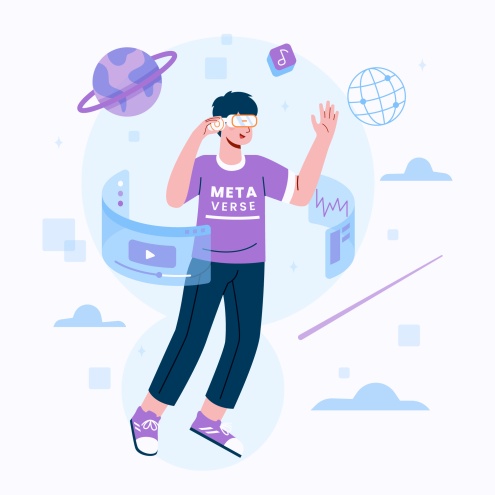
Immersive technology is no longer just a futuristic concept, it’s becoming part of our everyday reality. From gaming and education to healthcare and retail, the convergence of AR, VR, AI and haptics is reshaping how we interact with digital environments. This blog explores how these technologies are coming together to create nextgen experiences that go far beyond the headset.
What Is Immersive Technology?
mmersive technology refers to digital experiences that simulate or enhance reality. It includes:
1. Augmented Reality (AR): Overlays Digital content onto the real-world using devices like augmented reality glasses
2. Virtual Reality (VR): Creates fully simulated environments accessed through a virtual reality headset
3. Artificial Intelligence (AI): Powers smart interactions, personalisation and real-time responsiveness
4. Haptics: Adds touch-based feedback to digital experiences, making them feel more life like
Together, these technologies are building a new layer of interaction that feels intuitive, responsive and deeply engaging.
The Rise Of AR & VR In 2025
According to a 2024 IDC report, the global AR and VR market is expected to surpass £100 billion by 2026. The growth is driven by demand for immersive training, virtual collaboration and interactive retail experiences.
AR is being used in industries like automotive, fashion and architecture to visualise products in real-world settings. Meanwhile, VR is transforming education, therapy and entertainment by offering fully immersive simulations.
The launch of lightweight augmented reality glasses and wireless virtual reality headsets has made these technologies more accessible and user-friendly.
AI: The Brain Behind Immersion
Artificial Intelligence plays a key role in making immersive experiences smarter. It enables:
a. Real-time environment adaptation
b. Voice and gesture recognition
c. Predictive personalisation
d. Intelligent NPCs (non-player characters) in gaming
In 2025, AI is expected to power over 70% of AR/VR applications, making them more responsive and tailored to individual users.
For example, AI-driven fitness apps in VR can adjust workouts based on your performance, while AR shopping assistants can recommend products based on your preferences and past behaviour.
Haptics: Adding The Sense Of Touch
While AR, VR and AI engage sight and sound, haptics brings in the sense of touch. Haptic feedback uses vibrations, pressure and motion to simulate physical sensations.
In gaming, haptic gloves and suits allow players to feel virtual objects. In healthcare, haptic-enabled simulators help train surgeons with realistic tactile feedback.
The global haptics market is projected to grow by 12% annually, with applications expanding into remote work, virtual meetings and digital art.
The Power Of Convergence
The real magic happens when these technologies work together. Imagine:
a. Wearing augmented reality glasses that display real-time data while AI interprets your surroundings and haptics let you feel virtual buttons
b. Using a virtual reality headset for a training session where AI adjusts the difficulty and haptics simulate real-world tools
c. Experiencing a virtual concert where AR visuals blend with AI-driven soundscapes and haptic vibrations match the beat
This convergence creates truly immersive experiences that are multi-sensory, personalised and emotionally engaging.
Challenges And Considerations
Despite the excitement, there are challenges:
1. High development cost
2. Hardware limitations
3. Privacy and data concerns
4. Accessibility for all users
Developers and brands must focus on ethical design, exclusive interface and sustainable innovation to ensure these technologies benefit everyone.
What’s Next For Immersive Tech?
The future of immersive tech lies in seamless integration. Experts predict:
1. AR glasses will replace smartphones for many tasks
2. VR headsets will become lighter and more affordable
3. AI will enable hyper-personalised environments
4. Haptics will evolve to simulate temperature, texture and resistance
By 2030, immersive tech could be as common as mobile apps are today, transforming how we learn, work and connect.
Affabletech.ai is here to help you lead that transformation. Whether you’re building immersive training modules, virtual storefronts or interactive learning platforms, our team ensures your solutions are intelligent, immersive and impactful.
Affabletech India delivers cutting-edge AR/VR solutions that are accessible and future-ready.



